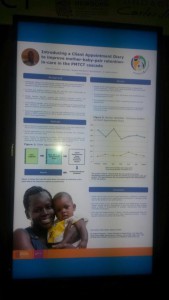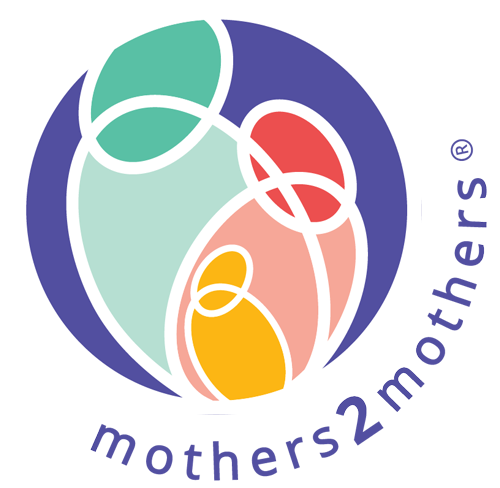m2m Presents on Retention in Care at the Global Maternal Newborn Health Conference
 mothers2mothers (m2m) presented a poster today on a new system m2m is using to retain HIV-positive women and their babies in care at the first-ever Global Maternal Newborn Health Conference in Mexico City, hosted by the Secretariat of Health of Mexico and convening partners from 18-21 October. The landmark conference includes discussions on strategies for reaching every mother and newborn with high-quality healthcare.
mothers2mothers (m2m) presented a poster today on a new system m2m is using to retain HIV-positive women and their babies in care at the first-ever Global Maternal Newborn Health Conference in Mexico City, hosted by the Secretariat of Health of Mexico and convening partners from 18-21 October. The landmark conference includes discussions on strategies for reaching every mother and newborn with high-quality healthcare.
m2m is being represented by Monitoring and Evaluation Associate Stephano Sandfolo, who shared findings on the effectiveness of m2m’s new tracking tool to improve retention in care of HIV-positive mothers and their babies.
Here is a summary of the poster that is on display:
 Introducing a Client Appointment Diary to improve mother-baby-pair retention-in-care in the PMTCT cascade
Introducing a Client Appointment Diary to improve mother-baby-pair retention-in-care in the PMTCT cascade
Background: In the PMTCT cascade, many women are lost to follow-up at several points of care, resulting in missed opportunities to reduce vertical transmission and promote maternal and child health. The Client Appointment Diary is a new tool that m2m uses to track uptake of PMTCT priority events and to identify and follow up on clients who have missed appointments.
Methods: Mentor Mothers record clients’ priority appointments in the Client Appointment Diary. Missed appointments are tracked and followed up through text message, phone calls and home visits, and daily records are aggregated on Monthly Summary Sheets in the diary.
Results: 1843 women who missed priority appointments were identified, compared to the previous system that identified 483 women – a 282% increase. Of the 74% of clients reached after missing their appointments, 82% came back to the facility to access their scheduled services.
Conclusion: Client tracking using the Client Appointment Diary is effective in identifying clients who missed priority appointments and in bringing clients back to the facility for care and treatment.
View the Poster






















